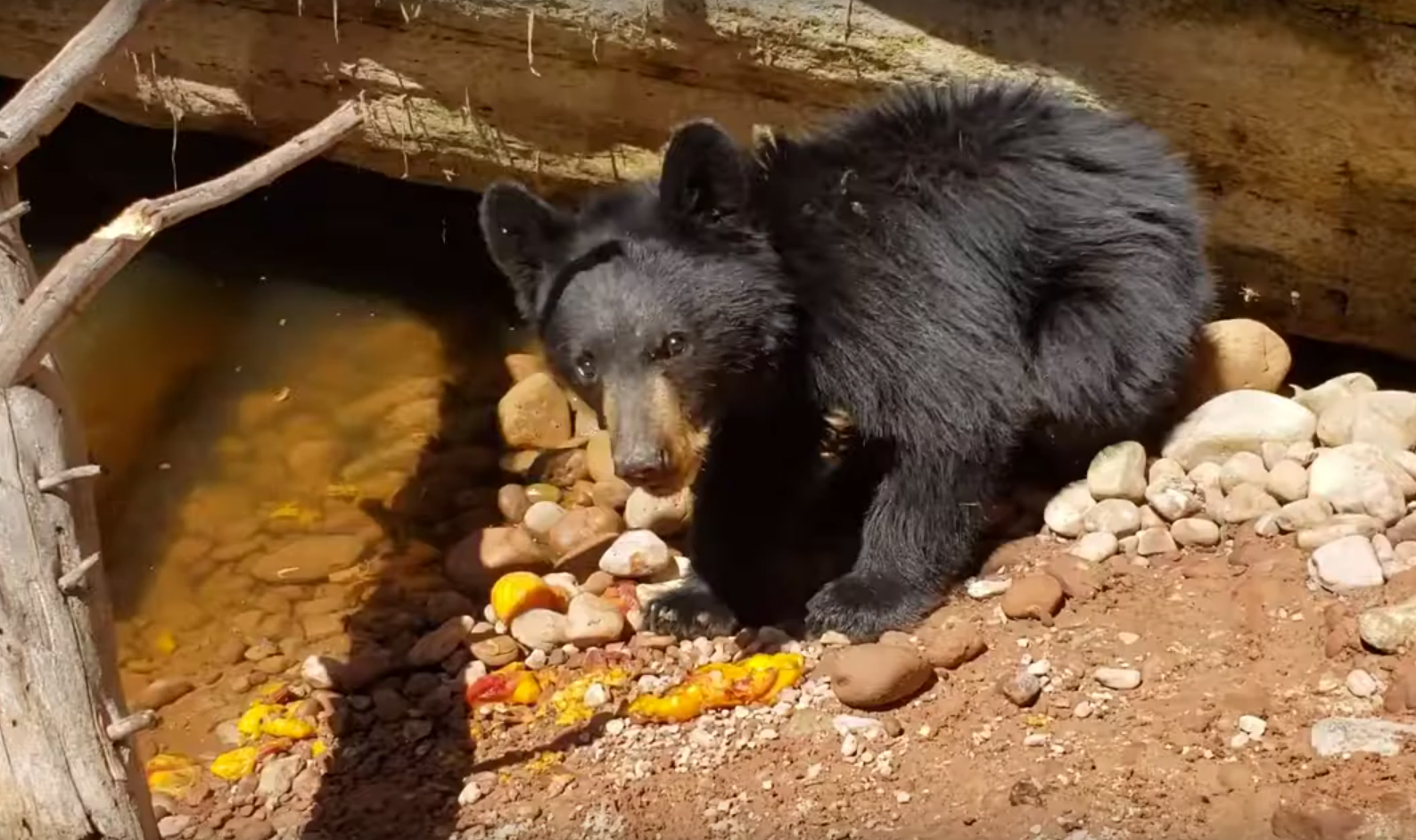Some information may be outdated.
From the recent bear found stranded in a pothole to bears spotted munching on fruit trees in Moab, many have remarked that this has been a hot bear summer.
On Aug. 9, a young black bear bit a boy at the Dewey Bridge Campground along the Colorado River. The 13-year-old victim was camping with a group and was sleeping on the ground near a riverside pavilion when the bear bit him.
On Sept. 4, a starving bear was rescued from a Moab-area pothole, while bears were spotted in the Mulberry Grove and Antiquity Lane-areas of the city multiple times this month. That’s not even counting the trio of bears rescued from a tree in Castle Valley.
We checked with Aaron Bott, conservation outreach manager for the Division of Wildlife Resources (DWR), to answer the burning question we’ve heard around town: why so many bears?
“We had a very late spring and all of the rains fell on lower elevations, causing a massive crop of acorns and fruit trees in orchards,” said Bott. “Because of all of this, we are seeing a lot of bears coming down out of the high mountain areas to find food opportunities that are convenient for them.”
Earlier this year, DWR officials reported that the number of bears reported getting into garbage and food had doubled from the previous year.
According to Bott, this year has brought notable numbers of bears to unexpected areas all over the West due to the late spring and longer than normal hibernation.
There are also simply more black bears, the only kind currently found in Utah, all over the state.
“The state’s bear population has been growing steadily since 1998,” DWR game mammals coordinator Darren DeBloois said, “especially in the southeastern part of the state.”
When those bears head to areas frequented by people, problems arise.
“Bears like to go with easy foraging opportunities, and sometimes that’s in our backyard,” said Bott.
Bears already on the move and searching for food can be drawn to residential yards with fruit trees or campsites with unattended kitchens.
“The most important thing that I can emphasize is the importance of keeping your yard and your campsite clean and bear-proof,” Bott said.
While the DWR always attempts to relocate bears that turn up in residential areas, Bott says that many people underestimate just how difficult of a job that can be.
“It’s difficult for us to take that bear and just relocate it someplace over the hill because…more likely than not, that bear is going to come back,” said Bott.
“What I think a lot of people struggle with understanding is just how far a bear can roam,” he said.
According to officials, black bears travel around 2 to 8 miles in a day. However, some black bears have been known to travel well over a hundred miles in a matter of weeks.
While the bear that bit a child in August was trapped and euthanized by DWR officials, all the other bears trapped in the area were relocated to remote areas like the Book Cliffs.
To prevent more bears from making their way into town, Bott recommends cleaning any ground-fall fruit from orchards and making sure that all food is inaccessible to animals when camping.
“Bear boxes are very helpful, but we recommend just locking up all of your food and kitchen stuff in your trailer or vehicle so bears don’t come and find an easy meal,” he said.
When camping, discouraging bears from coming near your campsite is “a number one concern,” said Bott.
But if the fear of a big bear doesn’t motivate change, Bott has another tactic to encourage people to keep a clean campsite and yard.
“Don’t forget rodents and squirrels,” Bott said with a smile. “Both of those will chew through your expensive sleeping bag to get at your Snickers bar. Don’t want that.”
For more information on recent bear activity and awareness, go to www.wildawareutah.org/utah-wildlife-information/bears/
Appreciate the coverage? Help keep local news alive.
Chip in to support the Moab Sun News.





